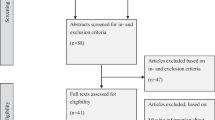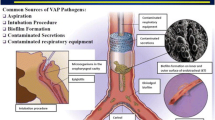Abstract
Managing acute illness is an important aspect of medical care for nursing home residents, but little data is available on the nature of acute illness in this setting. The aims of this study were to determine the incidence, etiologies, risk factors and outcomes of acute illness in nursing home residents. This was a prospective cohort study of residents at one Veterans Administration nursing home (N=140). Acute illness episodes were identified prospectively for one year through staff interviews and medical record review. Etiologies of acute illness were determined based on standardized criteria. Subjects were followed for three years to determine hospital utilization, discharge location and survival. There were 113 acute illness episodes identified (0.59 episodes per subject per month). The most common etiologies were pneumonia (33% of episodes), and urinary tract infection (27%). Significant risk factors for acute illness included anemia, dependence in mobility and surveillance time (i.e., duration of time monitored for illness episodes) in the nursing home (model χ2 27.16, p<0.001). Subjects who developed acute illness had increased hospital utilization during the first year of follow-up (p=0.034); they were also less likely to be discharged home by both one year (χ2 12.37, p<0.001) and two years of follow-up (χ2 9.45, p=0.009). When hospice and respite residents with short stay were excluded, subjects who developed acute illness had lower 3-year survival (Log rank 4.97, p=0.026), and the rate of acute illness episodes (i.e., number per month monitored) predicted 3-year mortality (Cox proportional hazards, p<0.001). In conclusion, acute illness is extremely common among nursing home residents, and is most often due to infection. The occurrence of acute illness identifies residents who have increased hospital utilization, are less likely to return home, and have decreased long-term survival.
Similar content being viewed by others
References
Doty P.J.: The oldest old and the use of institutional long-term care from an international perspective. In: Suzman R., Willis D., Manton K.G. (Eds), The Oldest Old. Oxford University Press, New York 1992, pp. 251–267.
Hing E.: Use of nursing homes by the elderly: preliminary data from the 1985 National Nursing Home Survey. In: Advance Data from Vital and Health Statistics. (PHS) 87-1250. National Center for Health Statistics, Hyattsville, MD, 1987.
Kemper P., Murtaugh C.N.: Lifetime use of nursing home care. N. Engl. J. Med. 324: 595–600, 1991.
Sager M.A., Easterling D.V., Kindig D.A., Anderson O.W.: Changes in the location of death after passage of Medicare’s prospective payment system. N. Engl. J. Med. 320: 433, 1989.
Teresi J.A., Holmes D., Bloom H.G., Monaco C., Rosen S.: Factors differentiating hospital transfers from long-term care facilities with high and low transfer rates. Gerontologist 31: 795–806, 1991.
Bergman H., Clarfield A.M.: Appropriateness of patient transfer from a nursing home to an acute-care hospital: A study of emergency room visits and hospital admissions. J. Am. Geriatr. Soc. 39: 1164–1168, 1991.
Lewis M.A., Cretin S., Kane R.L.: The natural history of nursing home patients. Gerontologist 25: 382–388, 1985.
Folstein M.F., Folstein S.E., McHugh P.R.: ‘Mini-mental state’: a practical method for grading the cognitive state of patients for the clinician. J. Psychiatr. Res. 12: 189–198, 1975.
Reisberg B., Ferris S.H., De Leon M.J., Crook T.: The global deterioration scale for assessment of primary degenerative dementia. Am. J. Psychiatry 139: 1136–1139, 1982.
Jennett B., Teasdale G., Braakman R., Mindexhoud J., Knill-Jones R.: Predicting outcome in individual patients after severe head injury. Lancet 1: 1031–1034, 1976.
Kayser-Jones J.S., Wiener C.L., Barbaccia J.C.: Factors contributing to the hospitalization of nursing home residents. Gerontologist 29: 502–510, 1989.
Gurwitz J.H., Sanchez-Cross M.T., Eckler M.A., Natulis J.: The epidemiology of adverse and unexpected events in the long-term care setting. J. Am. Geriatr. Soc. 42: 33–38, 1994.
Zimmer J.G., Watson N.M.: Physician response to notification of acute problems in nursing homes. J. Am. Geriatr. Soc. 39: 348–352, 1991.
Gordon W.Z., Kane R.L., Rothenberg R.: Acute hospitalization in a home for the aged. J. Am. Geriatr. Soc. 33: 519–523, 1985.
Zarian D.A., Peter S.A., Lee S., Kleinfeld M.: The causes and frequency of acute hospitalization of patients with dementia in a long-term care facility. J. Natl. Med. Assoc. 81: 373–377, 1989.
Murtaugh C.M., Freiman M.P.: Nursing home residents at risk of hospitalization and the characteristics of their hospital stays. Gerontologist 35: 35–43, 1995.
Dontas A.S., Tzonou A., Kasviki-Charvati P., Georgiades G.L., Christakis G., Trichopoulos D.: Survival in a residential home: an eleven-year longitudinal study. J. Am. Geriatr. Soc. 19: 641–649, 1991.
Wolinsky F.D., Callahan C.M., Fitzgerald J.F., Johnson R.J.: The risk of nursing home placement and subsequent death among older adults. J. Gerontol. 47: S173–S182, 1992.
van Dijk P.T., van de Sande H.J., Dippel D.W., Habbema J.D.: The nature of excess mortality in nursing home patients with dementia. J. Gerontol. 47: M28–M34, 1992.
Frisoni G.B., Franzoni S., Rozzini R., Ferrucci L., Boffelli S., Trabucchi M.: Food intake and mortality in the frail elderly. J. Gerontol. 50A: M203–M210, 1995.
Verdery R.B., Goldberg A.P.: Hypocholesterolemia as a predictor of death: a prospective study of 224 nursing home residents. J. Gerontol. 46: M84–M90, 1991.
Gillick M.R.: Long-term care options for the frail elderly. J. Am. Geriatr. Soc. 37: 1198–1203, 1989.
Katz P.R., Karuza J., Parker M., Tarnove L.: A national survey of medical directors. J. Medical Direction 2: 47–49, 1992.
Mezy M., Knapp M.: Nurse staffing in nursing facilities: implications for achieving quality of care. In: Katz P.R., Kane R.L., Mezy M.D. (Eds.), Advances in Long Term Care. Vol. 2. Springer-Verlag, New York, 1993.
Brooks S., Warshaw G., Hasse L., Kues J.R.: The physician decision-making process in transferring nursing home patients to the hospital. Arch. Intern. Med. 154: 902–908, 1994.
Coleman E.Z., Barbaccia J.C., Croughan-Minihane M.S.: Hospitalization rates in nursing home residents with dementia. A pilot study of impact of a special care unit. J. Am. Geriatr. Soc. 38: 108–112, 1990.
Zimmer J.G., Eggert G.M., Treat A., Brodows B.: Nursing homes as acute care providers. A pilot study of incentives to reduce hospitalizations. J. Am. Geriatr. Soc. 36: 124–129, 1988.
Gordon M., Cheung M., Wiesenthal S.: An acute care unit in a multilevel geriatric facility: The first two years of the new Bay-crest Hospital. J. Am. Geriatr. Soc. 38: 728–729, 1990.
Irvine P.W., Van Buren N., Crossley K.: Causes for hospitalization of nursing home residents: The role of infection. J. Am. Geriatr. Soc. 32: 103–107, 1984.
Gordon M., Vadas P.: Benefits of access to on-site acute and critical care for the residential section of a multi-level geriatric center. J. Am. Geriatr. Soc. 32: 453–456, 1984.
Kane R.L., Garrard J., Skay C.L., Radosevich D.M., Buchanan J.L., McDermott S.M., Arnold S.B., Kepferle L.: Effects of a geriatric nurse practitioner on process and outcome of nursing home care. Am. J. Public Health 79: 1271–1277, 1989.
Kane R.L., Garrard J., Buchanan J.L., Rosenfeld A., Skay C., McDermott S.: Improving primary care in nursing homes. J. Am. Geriatr. Soc. 39: 359–367, 1991.
Mott P.D., Barker W.H.: Hospital and medical care use by nursing home patients: the effect of patient care plans. J. Am. Geriatr. Soc. 36: 47–53, 1988.
Author information
Authors and Affiliations
Rights and permissions
About this article
Cite this article
Alessi, C.A., Harker, J.O. A prospective study of acute illness in the nursing home. Aging Clin Exp Res 10, 479–489 (1998). https://doi.org/10.1007/BF03340162
Received:
Accepted:
Published:
Issue Date:
DOI: https://doi.org/10.1007/BF03340162




